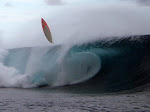Kava is consumed in various ways throughout the Pacific Ocean cultures of Polynesia, Vanuatu, Melanesia and some parts of Micronesia and Australia. Traditionally it is prepared by either chewing, grinding or pounding the roots of the kava plant. Grinding is done by hand against a cone-shaped block of dead coral; the hand forms a mortar and the coral a pestle. The ground root/bark is combined with only a little water, as the fresh root releases moisture during grinding. Pounding is done in a large stone with a small log. The product is then added to cold water and consumed as quickly as possible.
The extract is an emulsion of kavalactone droplets in starch. The taste is slightly pungent, while the distinctive aroma depends on whether it was prepared from dry or fresh plant, and on the variety. The colour is grey to tan to opaque greenish.
Kava prepared as described above is much more potent than processed kava. Chewing produces the strongest effect because it produces the finest particles. Fresh, undried kava produces a stronger beverage than dry kava. The strength also depends on the species and techniques of cultivation. Many find mixing powdered kava with hot water makes the drink stronger. However the active ingredients of kava, such as Kavalactone, are ruined at 140 degrees F. Most tea steeps at 180 degrees F for at least a couple minutes which will reduce the potency of the kava.
In Vanuatu, a strong kava drink is normally followed by a hot meal or tea. The meal traditionally follows some time after the drink so that the psychoactives are absorbed into the bloodstream quicker. Traditionally no flavoring is added.
Fijians commonly share a drink called "grog", due to its relaxing and groggy effects on the drinker, made by pounding sun-dried kava root into a fine powder, straining and mixing it with cold water. Traditionally, grog is drunk from the shorn half-shell of a coconut, called a "bilo". Despite tasting very much like dirty water, grog is very popular in Fiji, especially among young men, and often brings people together for storytelling and socializing. Drinking grog for a few hours brings a numbing and relaxing effect to the drinker, grog also numbs the tongue and so it is now a norm that these grog sessions have a "chaser" or sweet or spicy snack to follow a bilo.[4]
Ed's Note:-
Yoiks! and this is where My wife - Liz is!!!!!!
A psychoactive drug or psychotropic substance is a chemical substance that acts primarily upon the central nervous system where it alters brain function, resulting in temporary changes in perception, mood, consciousness and behavior. These drugs may be used recreationally to purposefully alter one's consciousness, as entheogens for ritual or spiritual purposes, as a tool for studying or augmenting the mind, or therapeutically as medication.
Because psychoactive substances bring about subjective changes in consciousness and mood that the user may find pleasant (e.g. euphoria) or advantageous (e.g. increased alertness), many psychoactive substances are abused, that is, used excessively, despite risks or negative consequences. With sustained use of some substances, physical dependence may develop, making the cycle of abuse even more difficult to interrupt. Drug rehabilitation can involve a combination of psychotherapy, support groups and even other psychoactive substances to break the cycle of dependency.
In part because of this potential for abuse and dependency, the ethics of drug use are the subject of a continuing philosophical debate. Many governments worldwide have placed restrictions on drug production and sales in an attempt to decrease drug abus
Chantal and Golla Malherbe Plus their two sons, Josh (four+) and Indie (one+) Following their dream on board their Fontaine Pajot 45ft Catamaran SY "Shimmi".
YOUR SURF HOLIDAY
For your next surf holiday
Contact Lorrin at
All Aboard Travel:
all-aboard@vodamail.co.za
www.all-aboardtravel.com









